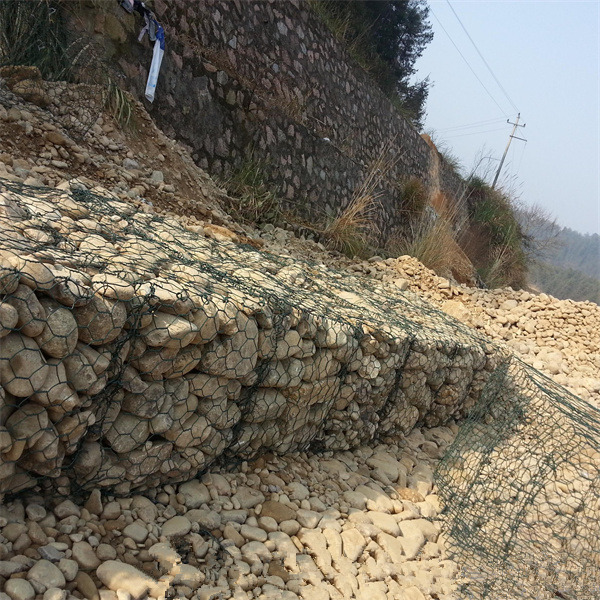10월 . 16, 2024 12:37 Back to list
Building a Durable Gabion Wall with Sandstone Materials for Landscape Design
Understanding Sandstone Gabion Walls A Sustainable Solution for Landscaping and Erosion Control
In the world of landscape architecture and civil engineering, the use of natural materials has gained popularity for its aesthetic appeal and functional benefits. Among these materials, sandstone gabion walls have emerged as a favored choice for both residential and commercial projects. These structures offer a unique combination of durability, sustainability, and versatility, making them an excellent choice for various applications, particularly in erosion control and landscaping.
What are Gabion Walls?
Gabion walls are structures composed of wire mesh baskets filled with rocks, stones, or other materials. These baskets are typically made from galvanized steel or PVC-coated wire, ensuring they are resistant to rust and corrosion. When filled with rocks, they form sturdy, permeable walls that can withstand the forces of nature. Sandstone, known for its attractive appearance and weather resistance, is an ideal material for filling these baskets. The combination of sandstone and gabion construction results in visually appealing structures that blend seamlessly into natural environments.
The Advantages of Sandstone Gabion Walls
One of the primary advantages of sandstone gabion walls is their excellent drainage capabilities. The permeability of gabion structures allows water to flow through, reducing the pressure on the wall itself and preventing hydrostatic buildup. This feature is especially beneficial in areas prone to heavy rainfall or flooding, where traditional solid walls may fail under the weight of accumulated water.
Moreover, sandstone gabion walls are highly adaptable
. They can be utilized in various settings, from garden borders and terraces to retaining walls and coastal protection structures. Their modular design allows for easy construction and customization, enabling landscape designers and builders to craft solutions tailored to specific site conditions and aesthetic requirements.Another key benefit is the sustainability aspect. Using natural materials such as sandstone minimizes the environmental impact of construction projects. Gabions can be filled with locally sourced stone, reducing transportation emissions and contributing to the local economy. Additionally, these walls promote biodiversity by providing habitats for small creatures and plants, enhancing the ecological value of an area.
sandstone gabion wall

Erosion Control
One of the most significant applications of sandstone gabion walls is erosion control. In regions with steep slopes or near bodies of water, soil erosion can pose a serious threat to infrastructure and landscapes. Gabion walls act as a barrier against soil movement, stabilizing the ground and retaining soil that would otherwise be washed away. The natural aesthetics of sandstone help the structure blend into the surrounding environment while providing critical support for the landscape.
The porous nature of gabion walls also facilitates the natural drainage of groundwater, preventing the destabilization of soils and reducing the risk of landslides. This quality makes them an ideal choice for regions susceptible to erosion, protecting both natural ecosystems and human infrastructure.
Aesthetic Appeal
Beyond their functional advantages, sandstone gabion walls offer visual benefits that traditional concrete or brick structures may lack. The rustic charm of sandstone adds warmth and character to outdoor spaces, contributing to a natural landscape design. These walls can be used creatively in landscaping projects, such as creating raised garden beds, seating areas, or decorative features that serve both practical and aesthetic purposes.
Landscape architects often take advantage of the versatility of gabion walls, using them creatively to integrate pathways, steps, and terraces into the natural contours of the land. By varying the size and arrangement of the sandstone within the gabions, designers can achieve unique patterns and textures, further enhancing the visual interest of outdoor environments.
Conclusion
Sandstone gabion walls represent a perfect fusion of functionality, sustainability, and aesthetic appeal. Their ability to control erosion, provide drainage, and complement natural landscapes makes them an invaluable tool for landscape designers and civil engineers alike. As more individuals and organizations recognize the benefits of using sustainable materials in their construction practices, sandstone gabion walls will likely continue to grow in popularity. Ultimately, they offer a practical solution for enhancing both the beauty and resilience of our outdoor spaces.
-
Visualizing Gabion 3D Integration in Urban Landscapes with Rendering
NewsJul.23,2025
-
The Design and Sustainability of Gabion Wire Mesh Panels
NewsJul.23,2025
-
The Acoustic Performance of Gabion Sound Barriers in Urban Environments
NewsJul.23,2025
-
Mastering the Installation of Galvanized Gabion Structures
NewsJul.23,2025
-
Gabion Boxes: Pioneering Sustainable Infrastructure Across the Globe
NewsJul.23,2025
-
Custom PVC Coated Gabion Boxes for Aesthetic Excellence
NewsJul.23,2025
-
Installation Tips for Gabion Wire Baskets in Erosion Control Projects
NewsJul.21,2025






